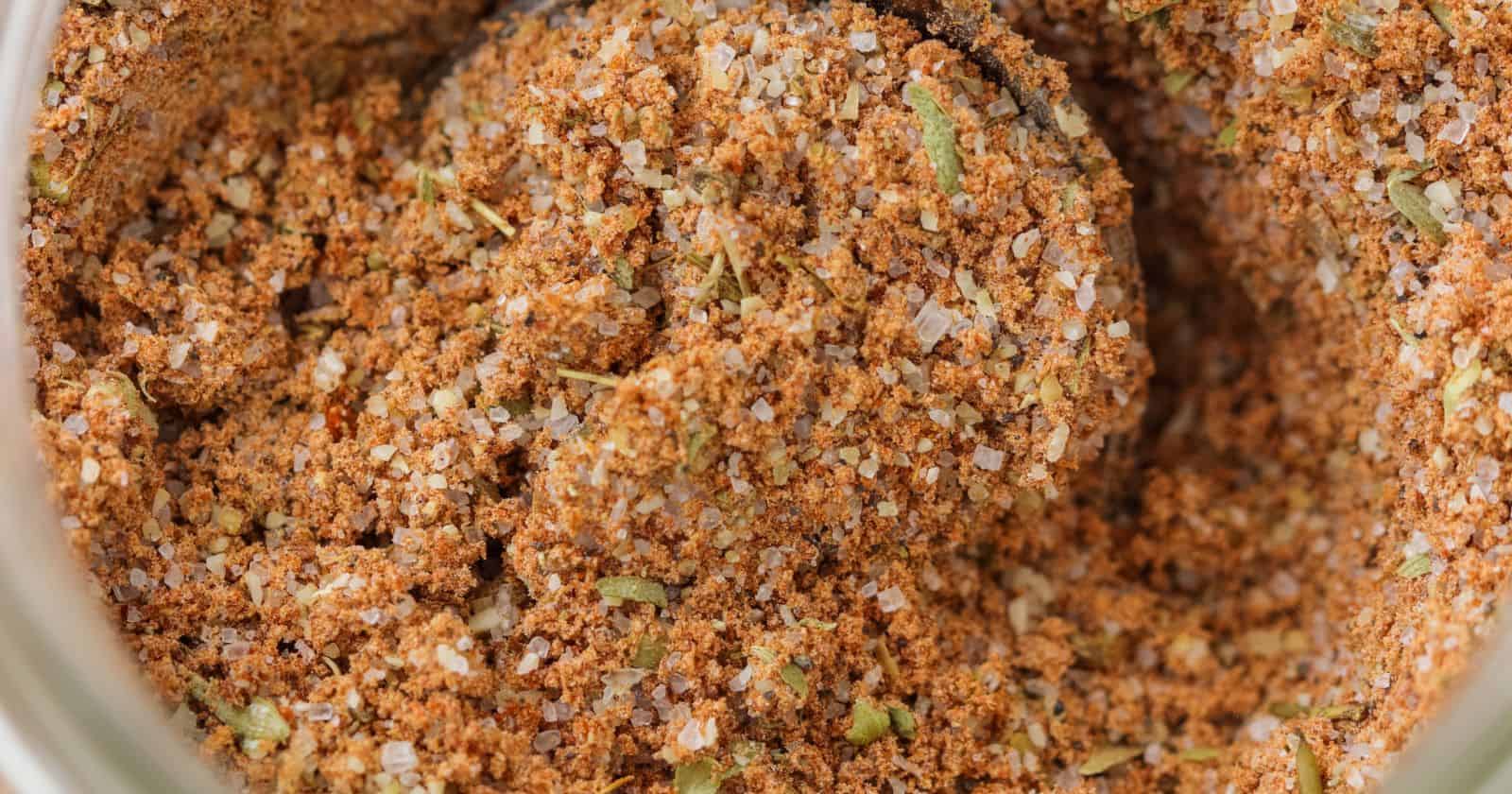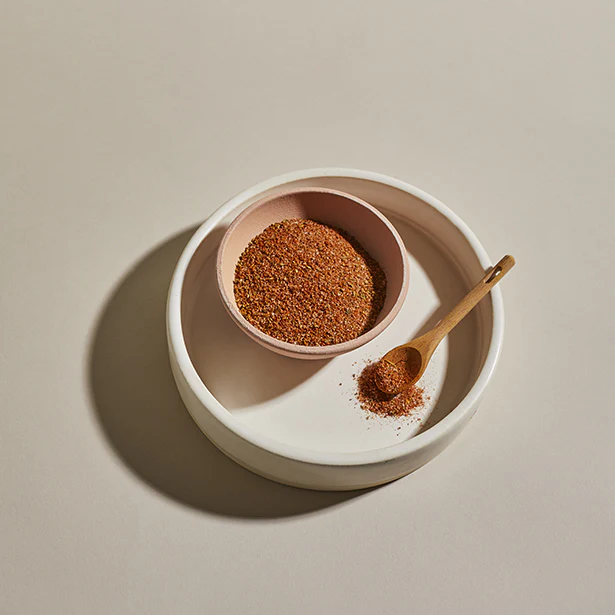Are you tired of bland, tasteless fajitas? Look no further than fajita seasoning to
No need to settle for mediocre meals when a simple seasoning blend can transform your dish into a mouth-watering delight.
Fajita seasoning is a mixture of various spices, including chili powder, cumin, and paprika often used to season meats and vegetables for fajitas. This seasoning adds depth and complexity to your dish, balancing the bold flavors of the meat with a subtle smokiness and slight heat. Easily found in grocery stores or made at home with simple ingredients, fajita seasoning is a must-have in your seasoning arsenal.
This article will explore the origins of fajita seasoning, its use, and how to make your homemade blend. We’ll also provide tips on incorporating this flavorful mixture into other dishes, expanding your culinary horizons beyond fajitas.
Whether you’re a seasoned home chef or a beginner, fajita seasoning is an essential ingredient in your kitchen. So get ready to elevate your meals and experience the joy of perfect seasoning with fajita seasoning.
What Is Fajita Seasoning?

Fajita seasoning is a blend of spices used to season fajita meat, typically made from skirt steak. This cowboy
Fajita seasoning is not just limited to the traditional dish named after it. It can also season chicken, seafood, vegetables, and more.
History and Cultural Background of Fajitas
The origins of fajitas can be traced back to the 1930s in the Rio Grande Valley of Texas when Mexican ranch workers were paid with the least desirable parts of the cow, such as the head, entrails, and skirt steak.
The skirt steak was marinated, cooked over an open flame, and served on a tortilla with grilled onions and peppers.
The modern American version of the fajita is said to have started in 1969 in a Texan restaurant also located in the Rio Grande Valley.
How Fajita Seasoning Came to Be
Fajita seasoning originated in the kitchens of Mexican ranch workers who used various
Fajita seasoning became popularized in restaurants in the 1980s when Tex-Mex cuisine became popular throughout the United States.
The Key Ingredients in Fajita Seasoning
The main spices used in fajita seasoning include chili powder, paprika, ground cumin, garlic powder, and salt. Each ingredient contributes to the distinctive taste of fajita seasoning on its way.
- Chili Powder: Adds a deep, smoky flavor and heat to the seasoning. It is made from dried chili peppers ground into a powder.
- Paprika: Adds sweetness and a mild earthy flavor to the seasoning. It is made from grinding dried sweet peppers.
- Ground Cumin: Adds a warm, earthy flavor and aroma to the seasoning. It is made by grinding seeds from the cumin plant.
- Garlic Powder: Adds a pungent, savory flavor to the seasoning. It is made by dehydrating and grinding garlic cloves.
- Salt: Enhances the flavor of all the other ingredients and helps to balance the seasoning’s overall taste.
Other common ingredients in fajita seasoning may include oregano, onion powder, and sugar. Oregano adds a woodsy, slightly bitter flavor, while onion powder adds a mild, sweet flavor.
Sugar can be used in small amounts to balance out the heat of the chili powder and add a touch of sweetness to the seasoning.
Combining these ingredients creates a complex, bold flavor that makes fajita seasoning a staple in many kitchens.
Using Fajita Seasoning in Cooking
Fajita seasoning is a versatile
Here are some techniques for using fajita seasoning to transform your cooking:
Marinade
Make a marinade by mixing fajita seasoning with oil, vinegar, and lime juice. Coat your meats or vegetables in the marinade and let it sit in the refrigerator for at least an hour before cooking.
Rub
Apply fajita seasoning as a dry rub to your meats before cooking. This technique works best on meats that will be grilled or roasted.
Saute
Add fajita seasoning to your vegetables as you saute them. This technique works well with onions, peppers, and mushrooms.
Sprinkle
Sprinkle fajita seasoning over your cooked meats or vegetables as a finishing touch. This works well with tacos, nachos, and salads.
Fajita seasoning enhances the flavors of various dishes in several ways:
- Adds a spicy kick: Fajita seasoning typically includes chili powder, cumin, and cayenne pepper, adding a bold and spicy flavor to your dishes.
- Enhances natural flavors: Fajita seasoning includes a blend of spices that complement the natural flavors of meats and vegetables, making them taste even better.
- Creates a cohesive dish: Fajita seasoning can be used to tie together a variety of ingredients, creating a cohesive flavor profile that makes your dish stand out.
Making Homemade Fajita Seasoning
Homemade Fajita Seasoning

Making homemade fajita seasoning is easier than you think! You can create a delicious seasoning blend that perfectly suits your taste preferences with a few simple ingredients and a little know-how.
Ingredients
- 2 tablespoons chili powder
- 2 teaspoons paprika
- 2 teaspoons garlic powder
- 1 teaspoon cumin
- 1 teaspoon dried oregano
- 1/2 teaspoon salt
- 1/4 teaspoon black pepper
Instructions
- In a small bowl, whisk together all of the spices until well combined.
- Taste the seasoning blend and adjust the amounts of each spice to your liking. For example, if you prefer a spicier blend, add more chili powder or black pepper.
- Store the seasoning in an airtight container for up to six months.
Tips for adjusting the recipe to personal preferences:
- For a smokier flavor, add a teaspoon or two of smoked paprika.
- Add some cayenne pepper to the mix if you like a little heat. Start with 1/4 teaspoon and adjust from there.
- For a milder blend, reduce the chili powder or omit it altogether.
- Experiment with different herbs and spices. Try adding a pinch of cinnamon or nutmeg for a unique flavor twist.
- Some people like to add a little sugar to their fajita seasoning. If you prefer a slightly sweeter blend, try adding 1 teaspoon of brown sugar or honey to the mix.
Making your own fajita seasoning is a great way to take control of the flavors in your cooking. You can create a blend that perfectly suits your taste buds with just a few simple tweaks. So go ahead and get creative in the kitchen!
Where to Buy Fajita Seasoning
There are several options for where to purchase fajita seasoning, including:
- Grocery stores: Most grocery stores carry various fajita seasoning brands in the
spice aisle. - Online retailers: Amazon, Walmart, and other online retailers offer a wide selection of fajita seasoning options for purchase.
- Specialty stores: Gourmet food and
spice shops often sell high-quality, artisanal fajita seasoning blends.
When purchasing fajita seasoning, consider the following factors:
- Quality: Look for brands with high-quality, fresh ingredients.
- Heat level: Consider the desired heat level, as some fajita seasoning blends may be spicier than others.
- Price: Fajita seasoning prices vary widely, so compare prices between brands and retailers to find the best value.
Fajita means thin strip in Spanish. When you marinate thin strips of steak, chicken, and veggies in our savory, tangy Fajita Seasoning, then wrap them in a warm tortilla, you'll have a near-perfect version of this quintessential Tex-Mex dish.
Mix the seasoning with olive oil and lime juice to use fajita seasoning, then rub it onto your desired meat or vegetable. Allow the ingredients to marinate for at least 30 minutes to let the flavors soak in, then grill or cook as desired.
Enjoy the bold, smoky flavors of fajita seasoning in your favorite dishes!
Fajita Seasoning Substitutes
Several substitutes can be used if you don’t have fajita seasoning on hand:
Taco seasoning
This similar blend of spices includes chili powder, cumin, garlic powder, and paprika. While it may not have exactly the same flavor as fajita seasoning, it can be a good substitute in a pinch.
Cajun seasoning
This blend of spices includes paprika, cayenne pepper, oregano, and thyme, among others. It can give your fajitas a spicy, flavorful kick.
Adobo seasoning
This traditional Mexican seasoning blend includes garlic, oregano, cumin, and vinegar. It can be used as a substitute for fajita seasoning for a slightly different flavor profile.
Whatever seasoning blend you use, the key to great fajitas is to marinate the meat and vegetables for at least an hour before cooking.
This will help to tenderize the meat and infuse it with flavor. Serve your fajitas with warm tortillas, salsa, guacamole, and sour cream for a delicious and satisfying meal.






